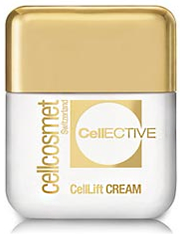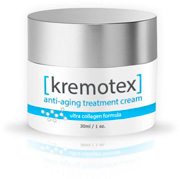Cellcosmet Review: Don’t Buy Before You Read This!
User Rating:
33%
 +
-
+
-
What is it?
Cellcosmet is a cream designed to revitalize and rebalance the function of the skin on a cellular level. It claims it will restore youthful vitality by increasing cell activity, deeply hydrating, and reinforcing the skin’s natural defenses.
The glycoproteins in Cellcosmet are said to improve cell communication and regeneration, resulting in firmer, more supple skin. Powerful antioxidants work synergistically to repair skin and prevent future damage.
Our review experts have evaluated many different anti-aging creams, and have concluded the best option available is Kremotex. Made with apple stem cells, shea butter, and other natural ingredients on the cutting-edge of anti-aging science, users are praising the noticeable results of this product.
Click here to view before and after pictures, and read more about the benefits of Kremotex.
Cellcosmet Ingredients and Side Effects
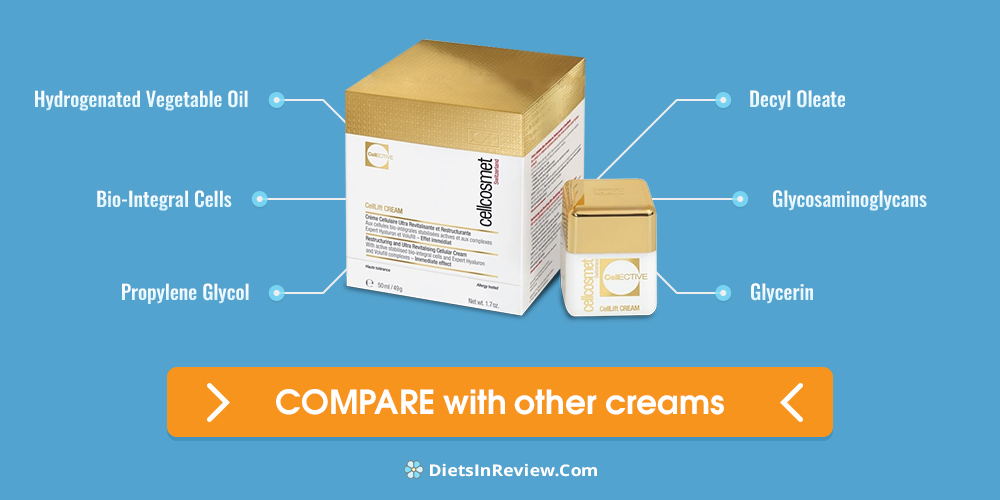
Key ingredients in Cellcosmet include:
| Hydrogenated Vegetable Oil |
Bio-Integral Cells |
Propylene Glycol |
| Decyl Oleate |
Glycosaminoglycans |
Glycerin |
| Hydroxyethylcellulose |
Dimethicone |
Glucose |
| Hydrolyzed Fibronectin |
Tocopheryl Acetate |
Ascorbyl Palmitate |
| Imidazolidinyl Urea |
Methylparaben |
Propylparaben |
Hydrogenated Vegetable Oil: Derived from liquid vegetable oil that has been solidified by adding hydrogen, this ingredient is used in skin care products for its emollient and skin conditioning properties. It can clog pores and exacerbate acne symptoms.
Bio-Integral Cells: Exclusive to the manufacturer, these nutritious energy reserves for skin cells help revitalize skin by rebalancing dermal functions. These cells can improve cellular activity and turnover, and nourish and strengthen the structure of the skin.
Propylene Glycol: A humectant that seals in moisture and water. It is also a skin irritant and linked to liver and kidney damage.
Decyl Oleate: Naturally derived from oleic acid, this fatty acid is used in skin care primarily as a lubricant that leaves a smooth, non-greasy film on the skin.
Hydrolyzed Glycosaminoglycans: A family of complex carbohydrates essential in many biological processes. Glycosaminoglycans have healing abilities and exceptional hydrating properties to aid in moisturization, firmness, and elasticity of the skin.
Glycerin: A natural humectant that can either be derived from plant oils or synthetically made. Draws water from the air into the skin, and forms a protective layer over skin to lock in the moisture.
Hydroxyethylcellulose: Naturally derived from cellulose, this amino acid is found in plants and used in skincare products for its emulsifying, binding, and thickening properties. It is also used as a preservative.
Dimethicone: A silicone based, organic polymer that forms a barrier on the skin, sealing in moisture. It is easily spreadable, and leaves skin silky and smooth to the touch. It is used in many skin care products as an emollient and humectant.
Glucose: A simple sugar that has water-binding properties to keep skin hydrated and replenished.
Hydrolyzed Fibronectin: A glycoprotein used in skin care for its skin conditioning properties, fibronectin is integral to cell adhesion, growth, and healing. It binds to collagen and helps stimulate production.
Tocopheryl Acetate: This highly potent form of Vitamin E helps protect against free radicals. It also helps replenish skin lipids, resulting in improved firmness.
Ascorbyl Palmitate: A fat-soluble compound derived from Vitamin C and palmitic acid, a naturally occurring fatty acid. This ingredient contains powerful antioxidative properties.
Imidazolidinyl Urea: An antimicrobial agent used in skin care products as a preservative. It has been proven to release formaldehyde, the active chemical that kills bacteria. It has been deemed safe for use in skin care products in amounts not exceeding .5%, but it can still cause irritation and contact dermatitis in some individuals.
Methylparaben: This ingredient is used in skin care products as a preservative and antifungal agent. It has the ability to mimic estrogen and can cause hormonal imbalances and endocrine disruption. Though it is considered safe in very small amounts on healthy, unbroken skin, users should still take caution when using products containing this or any type of paraben.
Propylparaben: Like Methylparaben, this ingredient is often created synthetically and used in skin care products as a preservative.
Cellcosmet Quality of Ingredients
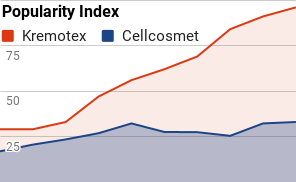 Only a few active ingredients are mentioned in any detail on the product website, which should be a concern to anyone interested in the quality of their skin care products and what nutrients they provide. The list provided in this review was found elsewhere online.
Only a few active ingredients are mentioned in any detail on the product website, which should be a concern to anyone interested in the quality of their skin care products and what nutrients they provide. The list provided in this review was found elsewhere online.
Cellcosmet may contain quality ingredients, but without a full list, it is impossible for consumers to determine how it will work for their individual skin type, or if it will address their particular concerns.
The formula includes several ingredients that are proven to treat underlying causes of premature aging, as well as ingredients that will help soothe, moisturize, and promote cell regeneration.
There are some concerns, however, about the harmful preservatives, Methylparaben and Propylparaben. Another preservative,Imidazolidinyl Urea, releases formaldehyde, which is a toxin concern. The formula also contains some fragrance ingredients and other unnecessary additives that may irritate skin.
Additionally, there are several silicone-based emollients, humectants, and texture enhancers in the cream. While they are mostly harmless, synthetic humectants moisturize only the surface of the skin and don’t attract moisture like natural humectants do. They aren’t able to hydrate to the deeper layers. It will moisturize instantly, but over time it can lead to drier skin.
Cellcosmet is dermatologist-tested and deemed safe for all skin types, but not all skin types react the same way to certain ingredients. Before using this or any skin care product, one should always check with a specialist to discuss the possible risks.
See which all-natural, age-defying skin creams top the 10-best list.
The Price and Quality of Cellcosmet
Cellcosmet is priced at £252.00 ($306) for a 1.7-ounce jar. This is very expensive compared to similar products.
Though rigorous product testing is performed by their team of expert dermatologists and biologists, there are no clinical trials available. There is also no full ingredient list, and there are only a few ingredients specifically identified on the website.
The formula contains some ingredients proven to reduce the visible signs of aging and help protect from environmental damage. There are also various silicones to help smooth and condition the skin, but synthetic silicone humectants can potentially dry the skin over time.
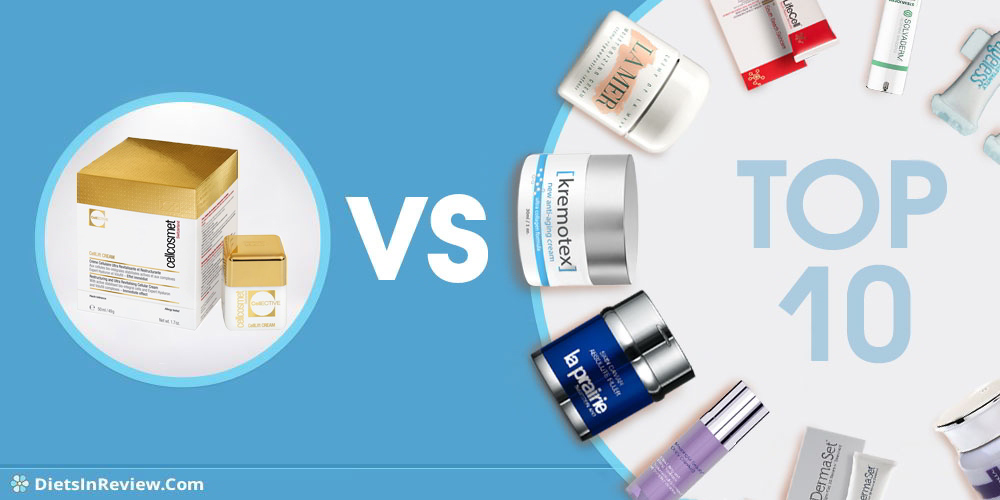
It ultimately seems that there are just as many potentially harmful preservatives, fragrances, and other known irritants than beneficial ingredients. Whether the product cost is justified is questionable. Consumers would have to ignore the possible risks associated with many of the concerning ingredients.
Click to view products on the list of top-rated anti-aging skin creams for the best value.
Business of Cellcosmet
The manufacturer of Cellcosmet is Cellap Laboratoire S.A. – Cellcosmet and Cellmen, headquartered in Switzerland.
Phone: +41 (0)21 652 95 27
Address: Cellap Laboratoire S.A. – Cellcosmet and Cellmen
Chemin de Budron A2
1052 Le Mont – sur – Lausanne
Switzerland
Email: There is an email contact form on their website.
There are very few complaints against this company and its products. The few complaints are generally about the high cost.
The website is very informative, easy-to-use, and does a good job of explaining the science and philosophy behind the products. Clinical trials and full ingredient lists, however, would be a welcome and beneficial addition, as these are the things consumers want to read before committing to purchase.
For a comprehensive list of the best age-defying creams compiled by review experts, visit this link.
Customer Opinions of Cellcosmet
All skin care products affect everybody’s skin differently, so until you try it for yourself, you won’t know how it works for you. Fortunately, online reviews for Cellcosmet are available, allowing consumers to make more informed decisions.
“I love all their products. I just wish they weren’t so expensive. I sometimes run out before I can afford to purchase more, and I do notice a difference.”
“I don’t know if the product is truly worth the cost. I know firsthand that it works, but I still feel like I’m being duped.”
“My miracle. No one can guess my age when I use it regularly. I use it very sparingly though, because it is not cheap, by any means.”
The effectiveness of any skin care product depends on individual skin type, allergies, proper application, and many other contributing factors. Please be aware of this when researching skin care products based on customer opinions.
To find out which anti-aging cream our experts have placed at the top of the list, click this link.
Conclusion – Does Cellcosmet Work?
Cellcosmet line promises many anti-aging benefits, like revitalized skin that is more vibrant, firm, and supple. It also claims it will deeply hydrate and smooth lines and wrinkles.
There is no ingredient list or clinical trials, however, and the formula contains many known irritants, preservatives, and other potentially harmful additives. For such an expensive product, these concerns might not be worth the risk. Cellcosmet could end up doing more harm than good.
Our expert reviewers have analyzed and compared many anti-aging products and found Kremotex to be the best overall.
Its fast-acting, all-natural ingredients boost collagen production, and essential antioxidants and vitamins promote cell regeneration, reversing the effects of aging and skin damage.
The glowing testimonials on their website, along with remarkable before and after transformation photos show why Kremotex was voted the best anti-wrinkle cream of 2025.
You can read more about the benefits of Kremotex and see before and after results by clicking here.
Featured Diets


